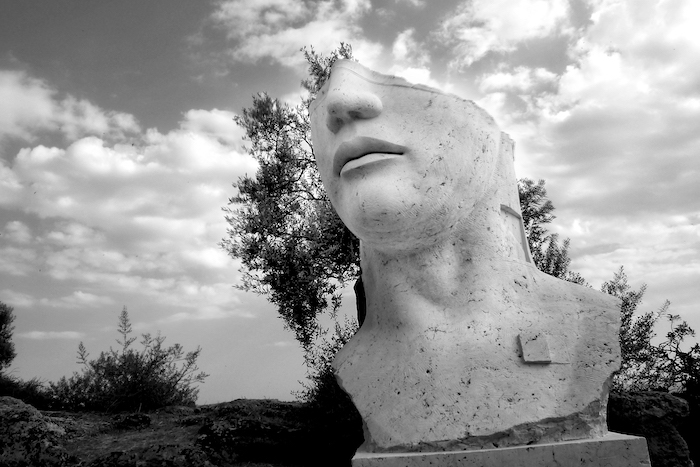Finisce male. Othello e la tragedia nonlineare femminile
Abstract
L'articolo analizza la difformità della tragedia shakespeariana, in particolare di _Othello_, rispetto alle teorie neoaristoteliche del genere e propone un modello alternativo di tragedia nonlineare, in particolare in Iago, basato sulla tessitura, sull'ordito e sull'intrico esemplificato dai numerosi riferimenti alla tessitura, materiale e verbale, operata dalle donneDownloads
Riferimenti bibliografici
Bacon, Francis, The Advancement of Learning (1605), New York, E.P. Dutton, 1915.
Ballestra-Puech, Sylvie, Métamorphoses d’Arachné. L’artiste en araignèe dans la littérature occidentale, Genève, Droz, 2006.
Barley, William, A Booke of Curious and Strange Inuentions, Called the First Part of Needleworkes, London, 1596.
Barolini, Teodolinda, “Arachne, Argus, and St. John: Transgressive Art in Dante and Ovid”, Medievalia 13 (1987): 207-26.
Bates, Catherine, “Weaving and Writing in Othello”, Shakespeare Survey,46(1994): 51-60.
Belfiore,Elizabeth S., Tragic Pleasures: Aristotle on Plot and Emotion, Princeton, Princeton University Press, 1992.
Berger, Harry jr., “Impertinent Trifling: Desdemona’s Handkerchief”, New Casebooks. Othello. William Shakespeare, Ed. Lena Cowen Orlin, Houndmills, Palgrave Macmillan, 2004: 103-24.
Boose, Lynda, “Othello’s Handkerchief: ‘The Recognizance and Pledge of Love’”, Critical Essays on Shakespeare’s ‘Othello’, Ed. Anthony Gerard Barthelemy, New York, G.K. Hall & Co, 1994: 55-67.
Bullough, Geoffrey, Narrative and Dramatic Sources of Shakespeare, London, Routledge & Kegan Paul, 1975, VII.
Callaghan, Dympna, “Looking well to linens: Women and cultural production in Othello”, Marxist Shakespeares, Ed. T. Hawkes, London, Routledge, 2001: 53-81.
Castelvetro, Lodovico, Poetica d'Aristotele Vulgarizzata e Sposta, Ed. Werther Romani, Bari, Laterza, 1978.
Chaucer, Geoffrey, “The Monk’s Tale”, The Riverside Chaucer(1977), Ed. George Robinson, Oxford, Oxford University Press, 1987.
Chevrolet, Teresa, L'idée de fable: théories de la fiction poétique à la Renaissance, Genève, Librairie Droz, 2007.
Chiari, Sophie, L’image du labyrinthe à la Renaissance. Détours et arabesques au temps de Shakespeare, Paris, Honoré Champion, 2010.
Coronato, Rocco, “La tragedia in Inghilterra”, Le rinascite della tragedia. Origni classiche e tradizione europee, Ed. Gianni Guastella, Roma, Carocci, 2006: 207-42.
Dundas, Judith, “Arachne’s Web: Emblem into Art”, Emblematica, 2 (1989): 109-37.
Frye, Susan, Pens and needles: Women’s textualities in Early Modern England, Philadelphia-Oxford, University of Pennsylvania Press, 2010.
Gellrich, Michelle, Tragedy and theory: the problem of conflict since Aristotle, Princeton, Princeton University Press, 1988.
Giraldi, Giambattista Cinzio, “Discorso intorno al comporre delle comedie e delle tragedie”, Scritti critici, Ed. Camillo Guerrieri Crocetti, Milano, Marzorati, 1973.
Florio, John, A Worlde of Wordes, or Most Copious, and Exact Dictionarie in Italian and English, London, 1598.
Gillespie, Stuart, Shakespeare’s Books. A Dictionary of Shakespeare Sources, London-New Brunswick, Athlone, 2001.
Golding, Arthur, Ovid’s Metamorphoses (1567), London, Penguin, 2002.
Hagen, Tanya, “An English Renaissance Understanding of the Word “Tragedy”. Early Modern Literary Studies, Special Issue 1 (1997): 5.1-30.
Heinsius, Daniel, De constitutione tragoediae. La constitution de la tragédie, dite La Poétique d’Heinsius, Ed. Anne Duprat, Genève, Droz, 2001.
Herry, Herbert, “Italian Definitions of Tragedy and Comedy Arrive in England”, Studies in English Literature, 1500-1900,14:2(1974): 179-87.
Jonson, Ben, Discoveries, Ed. Lorna Hutson, The Cambridge Edition of the Works of Ben Jonson, Cambridge, Cambridge University Press, 2012, VII.
Kelly, Henry Ansgar, Ideas and Forms of Tragedy from Aristotle to the Middle Ages, Cambridge, Cambridge University Press, 1993.
Korda, Natasha, Shakespeare’s Domestic Economies: Gender and Property in Early Modern England, Philadelphia, University of Pennsylvania Press, 2002.
Montaigne, Michel de, “De l’art de conferer”, Essais, livre III, Ed. Maurice Rat, Paris, Classiques Garnier, 1962, XII.
Pincombe, Mike, “English Renaissance tragedy: theories and antecedents”, The Cambridge Companion to English Renaissance Tragedy, Eds. Emma Smith and Garrett A. Sullivan, Jr, Cambridge, Cambridge University Press, 2010: 3-16.
Reiss, Timothy J., “Renaissance theatre and the theory of tragedy”, The Cambridge History of Literary Criticism, Ed. Glyn P. Norton, The Renaissance, Cambridge, Cambridge University Press, 2006: 229-47, III.
Sandys, George, Ovid’s Metamorphosis (1632), Eds. Karl K. Hulley – Stanley T. Vandersall, Lincoln, University of Nebraska Press, 1970.
Shakespeare, William, Othello (1997), Ed. E.A.J. Honigmann, The Arden Shakespeare, London, Thomson Learning, 2003.
Shohet, Lauren, “Othello’s iPad”, Shakespearean Echoes, Ed. K. Wetmore, Houndmills, Palgrave Macmillan, 2015: 108-119.
Smith, Ian, “Othello’s Black Handkerchief”, Othello: the State of Play, Ed. L.C. Orlin, The Arden Shakespeare, London, Bloomsbury, 2014: 95-120.
Steiner, George, The Death of Tragedy (1961), trad. it. Morte della tragedia, Milano, Garzanti, 1965.
Warner, Lawrence, “Desdemona’s Wooing: Towards a Pre-1538 Othello”, Words and Self Estranged in English Texts, 1550-1660, Eds. Philippa Kelly and L.E. Semler, Aldershot, Ashgate, 2010: 121-34.
Wright, Craig, The Maze and the Warrior. Symbols in Architecture, Theology, and Music, Cambridge, MA-London: Harvard University Press, 2001.
Informazioni sul copyright
Questa licenza permette a terzi di riprodurre, distribuire, comunicare al pubblico, esporre in pubblico, rappresentare, eseguire, recitare e modificare quest'opera, purché vengano citati l'autore e la rivista. Questa è la più ampia tra le licenze Creative Commons, rispetto alle libertà concesse a terzi sulle opere licenziate sotto Attribuzione.









